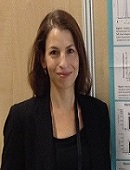Keynote Forum
Dr. Hiroshi Kobayashi
Chiba University
Keynote: Innovation of anti-cancer chemotherapy specific to acidic nests.
Time : 10:00-10:40

Biography:
Hiroshi Kobayashi received his Ph.D. in Biochemistry from University of Tokyo in 1974. After his postdoctoral training at Colorado University Medical Center, he started to study adaptation strategies of microorganisms to acidic environments at Chiba University in 1978. His research has been focused on mammalian cell functions under acidic conditions from 1996 at Graduate School of Pharmaceutical Sciences, Chiba University. His current challenge is to develop cancer chemotherapy specific to acidic nests. He retired in March 2012 and is now a professor emeritus at Chiba University. He works as an associate editor of International Immunopharmacology published by Elsevier B.V. from 2014.
Abstract:
Acidity in cancer nests has been investigated for over 80 years, but anti-cancer chemotherapy specific to acidic microenvironments has not been developed. Acidification of cancer nests is generally less than 2 pH units, and it has been argued that intracellular pH is not changed due to the cytosolic pH homeostasis. However, recent studies have revealed that cytosolic pH decreases with the acidification of extracellular environments, although the pH change in cytosolic space is less than that in the surroundings. For example, cytosolic pH values were reported to be 7.4 and 6.9 in media with a pH of 7.4 and 6.5, respectively. In another report, cytosolic pH values were 7.4 and 6.8 in media with a pH of 7.4 and 6.2, respectively. Many researchers had thought that such small pH changes do not affect cellular metabolisms, but the expression of many genes was found to increase under acidic conditions. These data suggest that some metabolic activities alter as the acidification of cancer nests, leading us to develop anti-cancer chemotherapy specific to acidic nests. Until now, four drugs have been found to have high efficacy to inhibit cancer progression under acidic conditions. These acidosis-dependent drugs have a great advantage to be less effective in normal tissues whose pH is slightly alkaline. On the basis of these findings, I would like to discuss the innovative chemotherapy specific to cancers progressing in acidified nests.

















